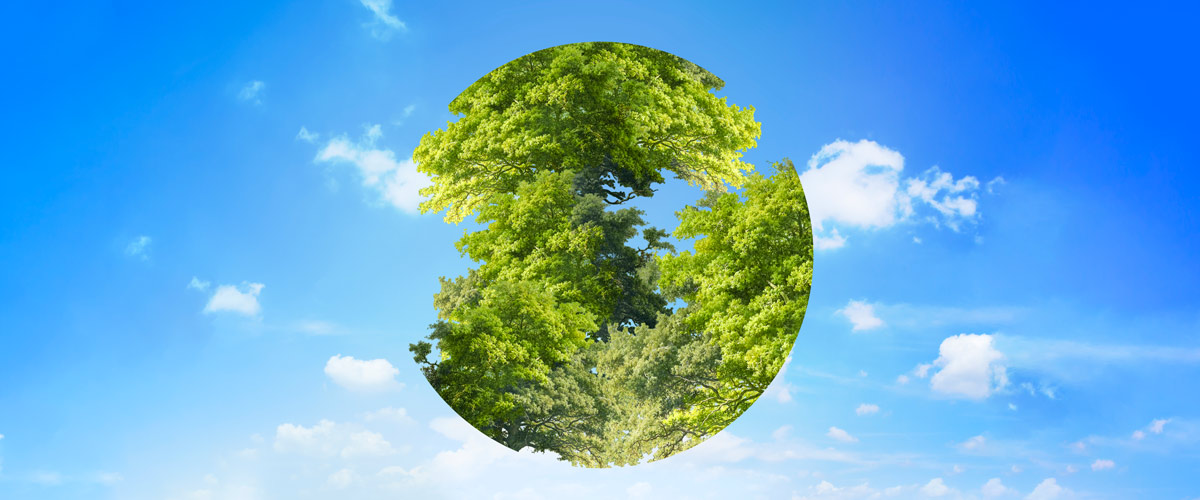Before explaining the carbon cycle, it will be necessary to explain how substances are in a cycle and what energy flow is.
What is Energy Flow and Matter Cycles?
While substances such as water, carbon, nitrogen, oxygen and phosphorus are among the basic elements of life, that is, our planet, these substances also participate in the structure of living things. While these substances, which have organic and inorganic structures, circulate continuously between living and non-living environments, this circulation is called the material cycle. The number of substances in the cycle has remained almost the same in the world for millions of years. But matter has always continued to move.
The flow of energy is the one-way flow of energy from the sun through the food chain, or photosynthesis, to producers, herbivores and carnivores. The cycle of matter cycles and energy flows makes it possible to maintain the ecosystem and life, and even to preserve the natural balance.
While energy is transferred through food, it also returns to the ecosystem after consumption, laying the groundwork for the continuation of the diversity of life in the ecosystem. If there is a breakdown in the energy and matter cycle, when too much or too little matter reaches an area, the balance of the ecosystem is disrupted. For example, when too much fossil fuels are used during the carbon cycle, too much greenhouse gas is released and this greenhouse gas accumulates in a certain region, creating problems such as overheating, i.e. global warming.
What is the Carbon Cycle?
The carbon cycle, as a type of matter cycle, is the continuous movement of carbon between the atmosphere, the aquifer, the earth and living things through factors such as decomposition, respiration, combustion, nutrition or photosynthesis.
In the structure of almost every living thing, carbon is present as a common organic compound in carbohydrates, proteins, fats and vitamins, and it has a cycle between living and non-living beings with its release as a result of respiration.
When we look at the sources of carbon in the world, 4 main sources can be mentioned. The whole cycle of carbon takes place through different events between these 4 environments.
- In the atmosphere, the air sphere, carbon is constantly present in the form of carbon dioxide.
- In the hydrosphere, the hydrosphere layer, there is always carbon dissolved in water in the form of both carbon dioxide and bicarbonate (HCO3) at points such as seas, rivers, lakes and oceans. This is because carbon passes from the atmosphere to the water in different ways, while living things in the water release carbon into the water layer as a result of respiration and decomposition.
- In the lithosphere, i.e. the earth, carbon is abundant in many fossil substances such as oil, coal, natural gas and limestone as a result of the decomposition of deceased living organisms in an oxygen-free environment.
- In the biosphere, the living world, carbon is present as an organic compound in all living organisms, and carbon is also present in the biosphere. While there is a high amount of carbon in fossilized organisms, there is carbon in every compound such as carbohydrates or fats in the structure of living cells, and when decay occurs with the death of the living organism, carbon dioxide is transformed into the atmosphere.
What are the Factors Causing the Carbon Cycle?
Among the factors that make up the carbon cycle;
- Plants take CO2 for photosynthesis, release oxygen and both CO2 and O2 are converted into an organic state in Glucose (C6H12O6). After the oxygen and glucose are burned in consumers, i.e. living beings, for energy use, carbon dioxide reaches the atmosphere again through respiration and returns to the soil through water.
- Since plants, i.e. producers, perform respiration in addition to photosynthesis, they return CO2 to the atmosphere when they consume food.
- When living things consume food, carbon returns to the atmosphere in the form of CO2 when they decompose in the soil after their death.
- When fossilized living waste is incinerated, a large amount of CO2 is emitted into the atmosphere.
- When limestone, one of the sources of carbon in the earth, is eroded, CO2 is released into the atmosphere.
What Factors Affect the Amount of Carbon in the Atmosphere?
Carbon is a very large part of the atmosphere in the form of carbon dioxide. In this respect, among the factors affecting the formation of carbon dioxide in the atmosphere;
- Realization of volcanic eruptions,
- Dissolution of limestone,
- Release of carbon dioxide in carbonate rocks,
- Bidirectional exchange of carbon dioxide between air and water thanks to movement on the water surface,
- CO2 is released when trees or fossil fuels are burned,
- The release of CO2 by the cellular respiration of living things,
- Carbon dioxide is released when living things decompose after death.
The following factors affect the decrease in the amount of carbon dioxide in the atmosphere.
- Chemosynthetic bacteria utilize carbon dioxide in the atmosphere to produce glucose.
- Marine animals take carbon dioxide from the atmosphere to form their shells.
- When living things die, the carbon in their structure turns into fossil fuel under the influence of pressure and time.
- Green plants take carbon dioxide from the atmosphere for photosynthesis.
- The amount of carbon dioxide in the atmosphere can be added to water through dissolution.
- After the death of sea creatures, carbon dioxide sinks to the bottom and is stored in carbonate rocks.
How does the carbon cycle happen?
While carbon is present in the atmosphere as carbon dioxide, it re-enters the cycle through methods such as photosynthesis. But at the same time, plants also give carbon dioxide back to the atmosphere because of nutrition and respiration. In the food chain, when herbivorous and carnivorous creatures eat plants, they transfer carbon and the carbon they take into their own structures is returned to the atmosphere as carbon dioxide through respiration.
When a plant that is not consumed as food dies, carbon is decomposed from the plant, the decomposer releases carbon dioxide into the atmosphere through respiration, and some of it goes into the soil. Millions of years later, as the pressure compresses, this carbon forms oil and other fossil fuels. Then, when fossil fuels are burned, a larger proportion of carbon dioxide is recycled.
When a dead animal does not undergo combustion or decomposition, the carbon is recycled back into fossil fuel as organic matter, and when that fossil fuel burns, carbon dioxide is released back into the atmosphere. When limestone containing carbon breaks down over time as a result of wear and erosion, carbon is released into the water and air.
Some aquatic creatures have carbon stores in their shells and some carbon leaves the cycle. But when these creatures die, their remains turn into lime rocks, and after a long time, carbon is reintroduced into the cycle through erosion from these rocks. While the oceans have always been involved in the carbon cycle, they are involved in the cycle within the first 100 meters of the sea surface, in a slow exchange with a much higher carbon content.
In gaseous form, carbon can move between two surfaces by diffusion. It can accumulate on the seafloor as shellfish produce carbonates and bicarbonates. It can then rejoin the carbon cycle thousands of years later when the atmosphere needs it.
Like land plants, ocean plants use carbon dioxide to photosynthesize. When animals eat these plants, carbon is released again through respiration, and after the animals die, decomposers release carbon dioxide again. So, carbon always continues to participate in the cycle, accumulating on surfaces and, of course, emerging.




